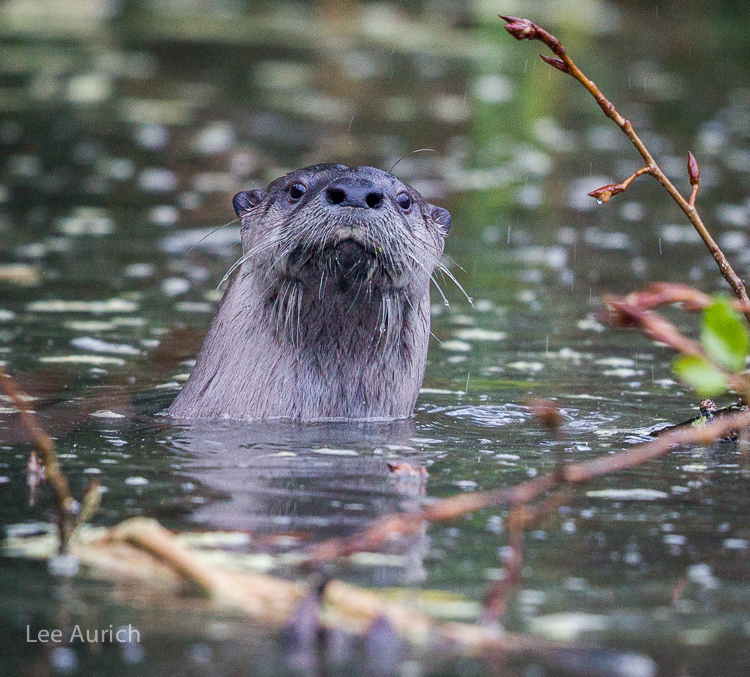
River otters seem to be nearly everywhere in the Bay Area. The charismatic critters draw a lot of attention and seem to be doing well in our urban creeks, lakes and estuaries. Sutro Sam, the river otter that took up residence in San Francisco at the Sutro Baths, the Lake Merritt otter and an otter in the bay near Richmond have all made the news. Last year, a river otter was a frequently seen in Jewel Lake at the Tilden Nature Area, munching on fish and crayfish. Though they may inhabit salt-water habitats like the bay, these are all river otters, not sea otters. This helpful website, eHow.com, spells out the differences that include river otters’ smaller size, larger litters, comfort traveling on land and difference in swimming and feeding habits. Both river and sea otters have been hunted for their dense fur, but river otters are not currently endangered or threatened with extinction like the sea otter population.
Last month, a pair of otters was seen every few days in the small lake at Temescal Regional Recreation Area, just off Highway 24 on the Oakland-Berkeley border. This park was the site of the original dam created by Anthony Chabot to provide drinking water to the Oakland-Berkeley communities. He soon replaced it with the larger dam at Lake Chabot, built in 1874-75. Doug Cantwell, the Park Supervisor at Temescal, said some fishermen are a little less than excited to share their favorite fishing area with the pair. He and his staff are happy, though, that their lake is healthy enough to support the semi-aquatic mammals. You can check out Lake Temescal’s connections to the larger watershed at this interactive creek map on the Oakland Museum of California’s website to see some possible pathways the otters may have taken to get here. We’re hoping they’ll stay awhile.

I talked with Megan Isadore, co-founder of The River Otter Ecology Project. She relayed that, “River otters are certainly being seen more and more often in the East Bay, from Richmond to Fremont to Fairfield and points in between. We’re also getting many sightings in Sonoma, Napa, Marin and the South Bay. The River Otter Ecology Project is working on the first-ever population assessment of river otters in the San Francisco Bay Area, and has collected over 600 river otter sightings since we began in 2012.”
Megan added, “Apparently, river otters are finding conditions in the Bay Area agreeable, and are finding enough food and habitat to thrive. River otters have proven themselves very adaptable to urbanized areas, and we hope they continue to do well.”
One of the key goals of the project is restoration and conservation of wetlands. It’s a necessity for the continued otter population growth. Megan says, “[It] has the added bonus of protecting and aiding the health and welfare of humans as well as every living thing. Water, like air, travels everywhere and the health of our waters affects every aspect of our lives.”